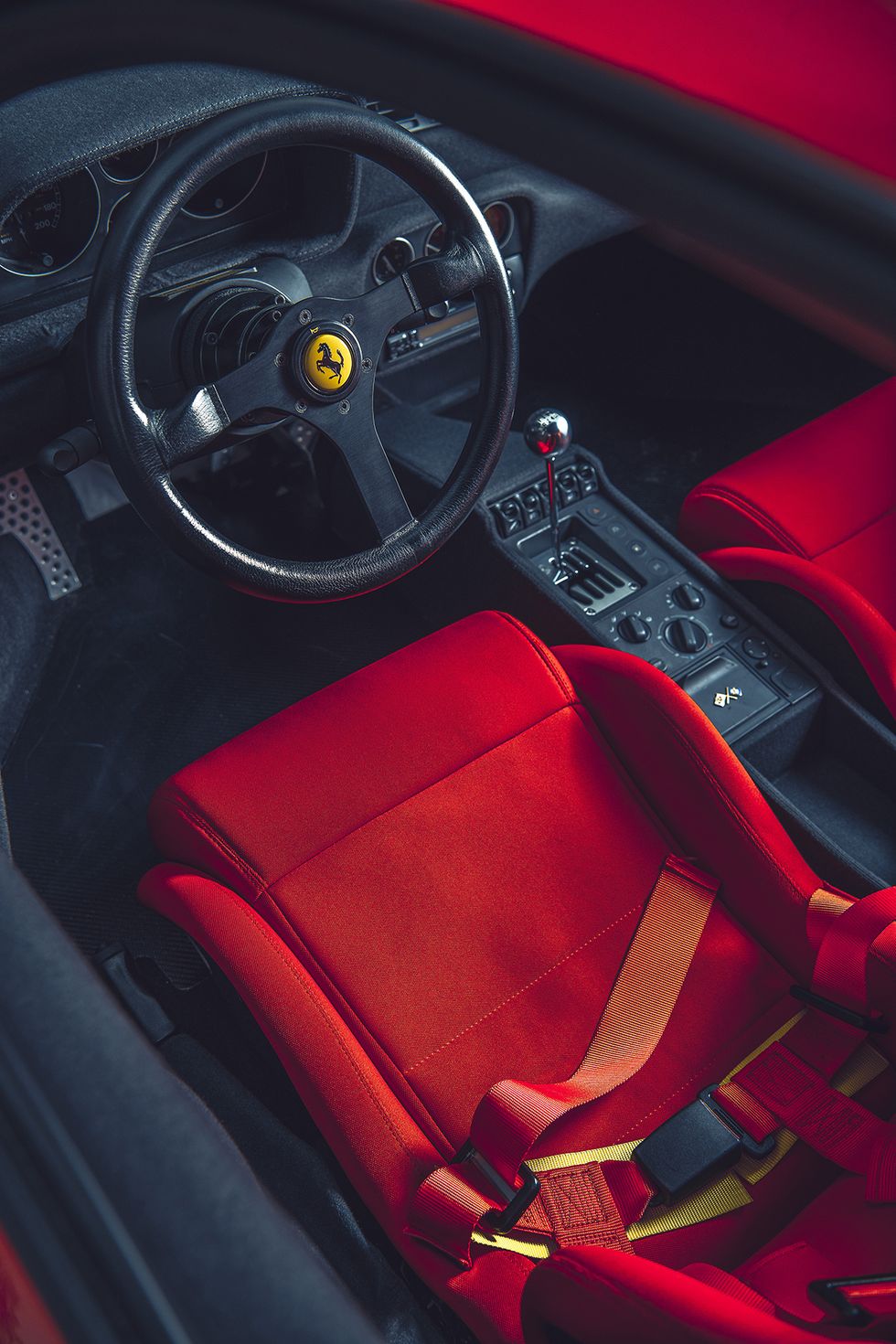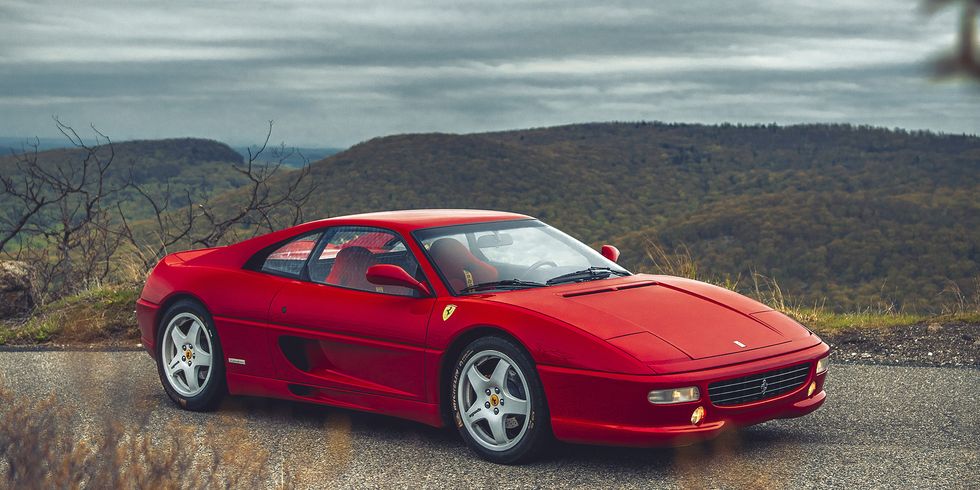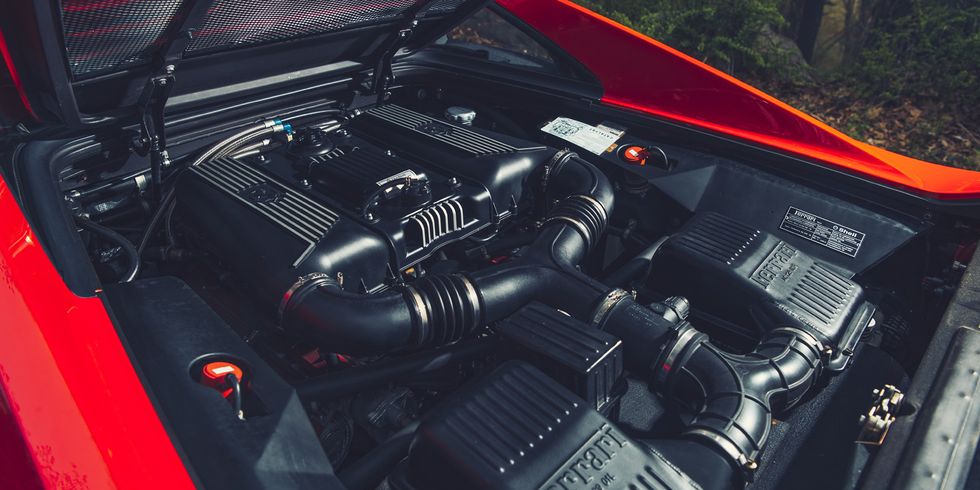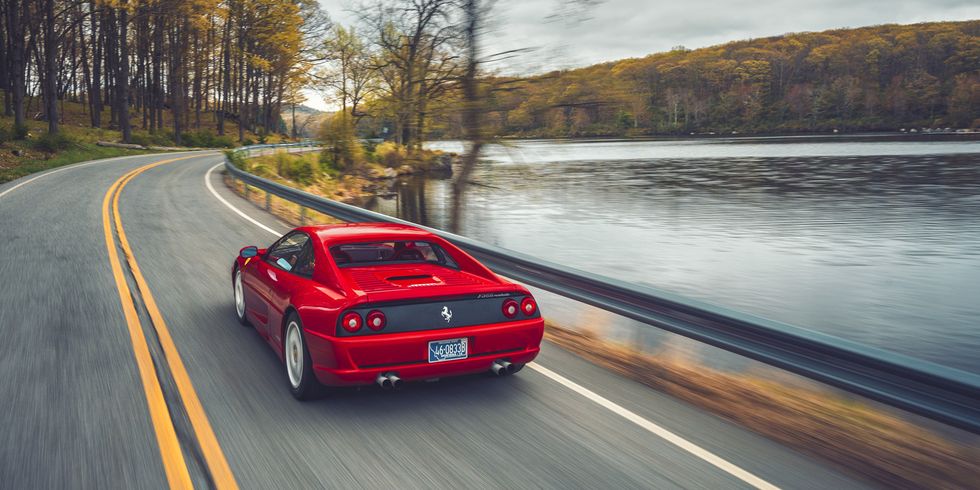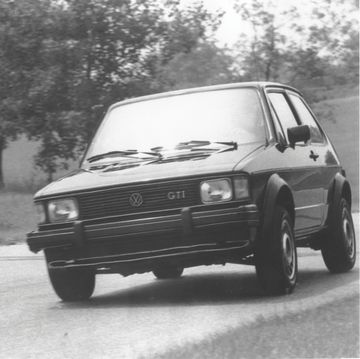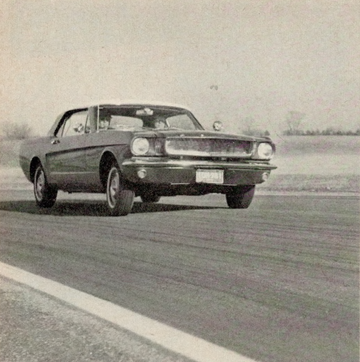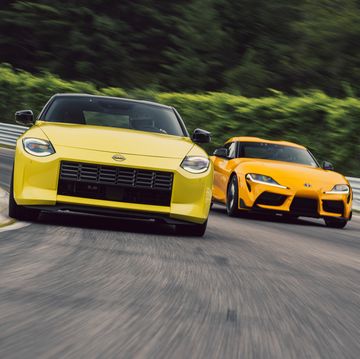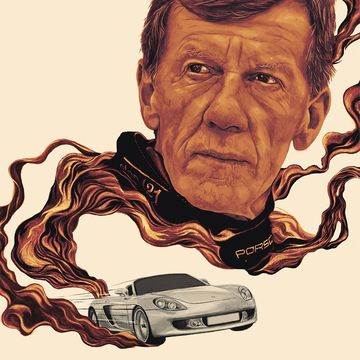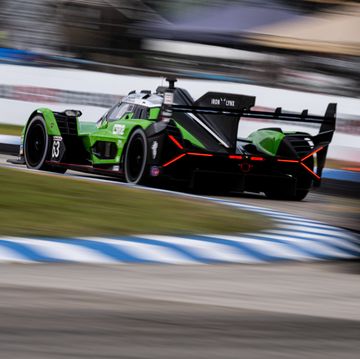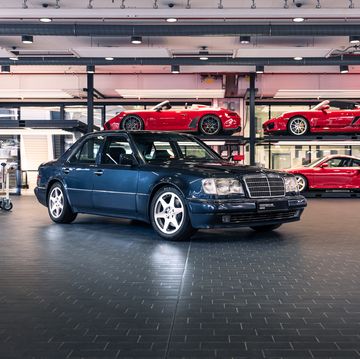"There are only two things I wish I'd finished on the car" Jeff Segal says, a grin sprouting up his cheeks. "It needs a 1990s mixtape in the stereo for me and a jar full of earplugs for passengers."
This story originally appeared in the July 2019 issue of Road & Track.
He’s grinning because of the car, a cherry-rossa 1999 Ferrari F355 Berlinetta, endowed by Pininfarina with curves like a skipping stone. Some say it's the last truly beautiful car Ferrari made. My quivering knees agree.
It's static, for now, the engine grumbling through a straight exhaust with no mufflers or baffling to mute the sound sent through the four ceramic-coated, French-horn exhaust tips and—close your eyes, Uncle Sam—no catalysts. The unbridled rumble is the first hint: This F355 ain’t basic. Passengers should bring their own earplugs.
The interior ditches conventional Ferrari fantasies, the ones with popped collars and fingerless driving gloves. This car will be sweatier, dirtier work. Segal replaced what he calls the "basic-bitch spec" leather seats with factory carbon buckets. A four-point Sabelt harness tugs at the driver's gut. The steering wheel was ripped from an F40. The rest of the interior is finished in that car's low-key cloth.
And when he says the same cloth as an F40, Segal means the exact same. Through his connections at Ferrari, Segal tracked down the original manufacturer of the F40's upholstery and had a run of the fabric made for his F355.
Segal earned these perks. He’s raced professionally for 12 years, with wins at Le Mans, Daytona, and Sebring, among others, usually in a Ferrari. But he's as humble and unassuming a champion as you'll meet. On the day of our test, Segal, dressed in a down jacket and donning oversized shades, would have vanished into the crowd at a Colorado ski lodge (if not an Italian concours).
Segal shipped his F355 "Modificata" (that’s "modified" to you non-Italian speakers) north for a change of scenery, ditching Miami for a gray spring in the mountains near Tuxedo Park, New York. With the Modificata, he joins the ranks of professional 'shoes tailoring old-school road cars with a race-winning sensibility.
The car is Segal's response to two current crazes: hyperexpensive Porsche restomods (too precious and pricey to be driven hard) and manufacturer track specials (focused, but about as suited to road driving as a brick oven). His canvas, the F355, was conceived just before Ferrari started to heavily digitize its cars but late enough that it feels current. "I've driven plenty of modern stuff. It's great, incredibly capable. The performance of the Ferrari 488, for example, is staggering. But to me, it’s not all about speed. It’s about driving experience," Segal says. "If you’re building a driver's car, it's gonna have a clutch and a manual transmission, or someone else can go and build it."
Step one in the conversion wasn't sexy. It was a tune-up. "Maintaining the 355 isn’t like taking care of a Gremlin," Segal explains. "There aren’t rules but best practices for what works." So the F355’s engine was dropped and treated to a full service. Nearly every wear item was replaced, regardless of necessity. The work was performed and scrutinized by race mechanics from Segal's inner circle. With his canvas blank, Segal leaned further on his factory connections, plucking parts from Ferrari Challenge race cars—a series he competed in briefly and has coached in since 2003. The Modificata's clutch, flywheel, exhaust, wheels, and steering rack were borrowed from the 355 Challenge. Ironic, considering the Modificata is meant for the road.
The race parts sharpen the car, but the magic sauce here is the suspension. Segal sank a lot of time and consideration into a car whose nose "pushed like a pig" from the factory, turning it into something both responsive and livable. Nearly three years of tinkering has led to this spec. "Maybe it's done. Maybe it's never done," he says.
"There's this misconception that a track car has to be stiff and harsh and brutal. That's not the case. When you look at some of the most dominant race cars out there—for example, the Corvettes racing in the GT Le Mans class… even the untrained eye can see that the Corvette is soft and very compliant but with enough control that it’s not sloppy."
Within the first hundred yards, the Modificata feels of one whole. My back braces for impacts on the moonscape highways leading to New York's mountain back roads. But every bump, lump, rut, and pothole is ironed flat, made fluid. Segal raised the car's ride height and kept the wheel diameter stock to maintain tire sidewall. Both changes helped ride quality and suspension compliance.
We pause at a diner for lunch before driving begins in earnest. The 375 hp 3.5-liter V-8, with its fiery-red valve covers, buzzes in anger behind the driver, peeling the wax off ear canals. Heat from the bulkhead licks your elbow as you slot into first. The clutch-uptake point sits high on the pedal's travel. Getting the car moving takes a big hoof of throttle. The gated manual shifter is tricky for the uninitiated. This isn't a machine for half measures.
As the car warms and you build rhythm behind the wheel, the world narrows. The awkward shifts you missed earlier disappear, easing the harder you flog the car.
In tight downhill esses, the Modificata's front grip seems limitless. The rear end will do polite little rotations off-throttle if you need to trim your line. There's even oversteer on throttle—arriving in thimbles way at the top of the tachometer—but none of the hairy theatrics that magazines warned you of when Y2K approached.
The tires are a cornerstone of this experience. They don't send the texture of the road to your fingertips, but they do let you know how hard they're working with big, gooey chunks of feedback. "I've had the misfortune of driving a race car on rain tires in the dry," Segal says. "On track, going for pace, it's horrendous. But it is lively." The tires here are Michelin P2Gs, rain tires for GT race cars (another industry hookup).
You won't find them at Tire Rack. They're all gummy-bear sidewall, made charming by an old-school-look tread pattern. In this case, less grip is more. Modern high-performance road tires would have made the Modificata's limits unsafe to reach on the road—just like a modern Ferrari's. Instead, you can lean hard on the fronts and play with the car's rear end. Segal says if you can work heat into the tires, the whole thing goes greasy and joyous.
And that engine never stops shouting, growling low down, then rising to a throaty roar in the middle of the tach. It doesn’t wake until 5000 rpm. Above that, it's a tidal wave. The last 500 revs—chasing up to a 8500-rpm redline—boom like cannon fire, crashing and reporting off nearby cliffs. Photographer DW Burnett said he could hear the exhaust note Dopplering from the hills on the other side of a rise more than a quarter mile away. If there were ever a noise to raise the dead, the Modificata's engine note would clear cemeteries in the next county.
We call it a day after sunset. I hoist myself from the Ferrari's cockpit, up to my eyes in adrenaline. My knees and ankles ache, victims to Italian ergonomics. My ears feel like murder. If you'd have told me they were bleeding, I would have yelled, "What?!"
Segal leaps back into his car, then roars into the night, curtains of rain falling before the Modificata's headlights. In seconds, the red wedge shrinks away. The exhaust echoes for several more minutes.
My thoughts turn to the Modificata's competitors, mostly gemlike vintage Porsches whose every plastic switch is rendered anew from billet. People buy those cars in part because they identify with the ethos of the person building them. Were I in the market, I'd choose a builder who could describe the smell of his favorite race gas. (Segal prefers one from a blue barrel: heady, Europe only, no ethanol.)
Segal's clients will subscribe to his brand of sensory overload but also his expertise. If a Singer-modified Porsche is a snifter of sherry, the Modificata comes in a shot glass. It's a winner in our book. Just don't forget the earplugs.

